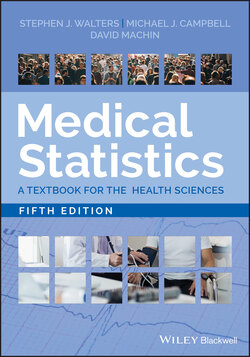Читать книгу Medical Statistics - David Machin - Страница 102
4.3 The Poisson Distribution
ОглавлениеThe Poisson distribution is used to describe discrete quantitative data such as counts that occur independently and randomly in time or space at some average rate. For example, the number of deaths in a town from a particular disease per day, or the number of admissions to a particular hospital in a day typically follows a Poisson distribution.
The Poisson random variable is the count of the number of events that occur independently and randomly in time at some rate, λ. The formula for a Poisson distribution is given as Eq. (4.2) in Section 4.9.
We can use our knowledge of the Poisson distribution to calculate the anticipated number of hospital admissions on any particular day or the number of deaths from lung cancer in a year in a town. We can use this information to compare observed and expected values, to decide if, for example, the number of deaths from cancer in an area is unusually high.
Figure 4.5 shows the Poisson distribution for four different rates λ = 1, 4, 10 and 15. For λ = 1 the distribution is very right skewed, for λ = 4 the skewness is much less and as the rate increases to λ = 10 or 15 it is more symmetrical, and looks more like the Binomial distribution in Figure 4.4.
Figure 4.5 Poisson distribution for various values of λ. The horizontal scale in each diagram shows the value of r.
